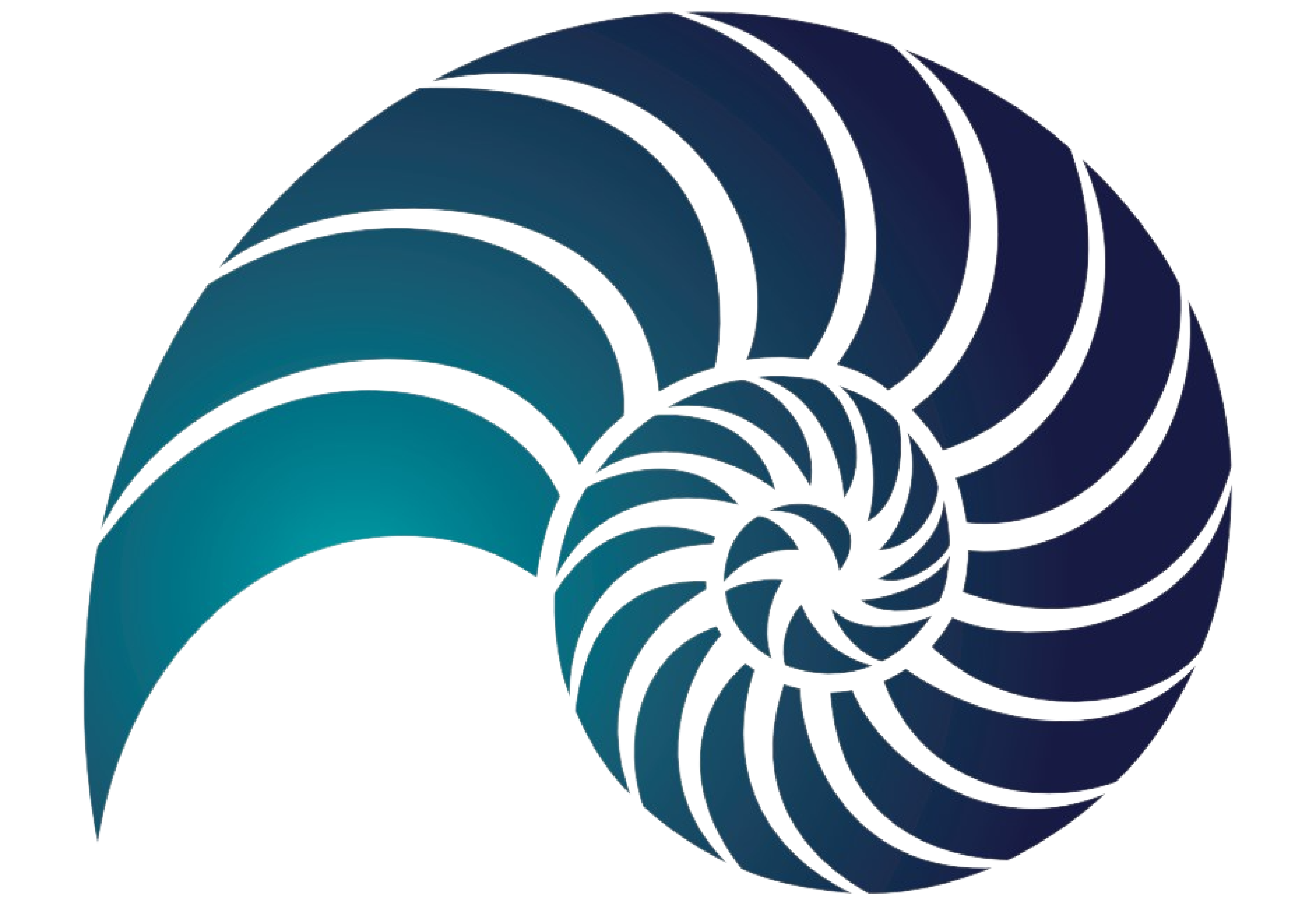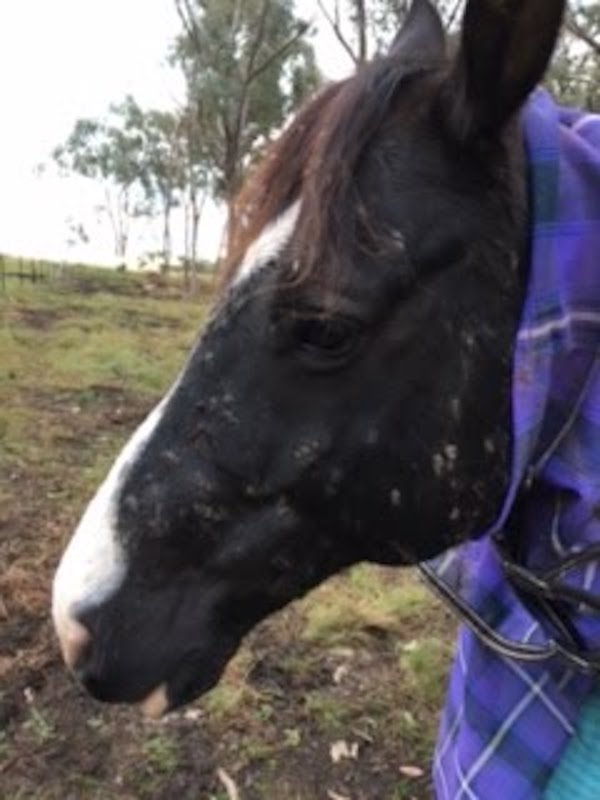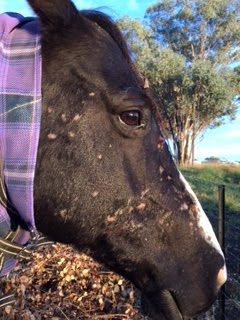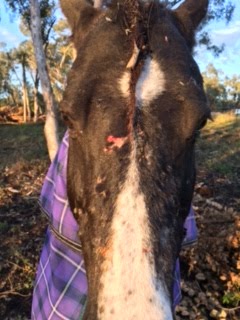Thursday, 19 October 2017
If your horse is fussing with the bridle or bit, not wanting to cooperate with your instructions or rubbing their face and neck against everything they can get close to then they may have equine neck threadworms.
Onchocerca cervicalis worms, also called equine neck threadworms, live in the large nuchal ligament that runs from the poll to the withers. Adult worms are very thin and may be several inches long. Most of the time, the adult stage causes no problems for the horse. Occasionally the adult worms can cause some inflammation and mineralization results. Adult worms reproduce by releasing immature microfilaria, which are spread by biting insects such as no-see-ums and black flies. Microfilaria concentrate along the bottom skin of the horse’s abdomen and chest, where these flies prefer to feed.
The presence of microfilaria can cause intense itching and resultant skin trauma and swelling. Dead microfilaria are often more itchy than live ones, so horses may show signs after they have been dewormed. The classic, but not often observed, lesion is a bullseye of hair loss and inflammation on the horse’s forehead. Most affected horses show dermatitis, crustiness, hair loss, itching, swelling, and self trauma to the skin along the bottom of the abdomen and chest.
Occasionally, microfilaria may migrate through the eye and cause edema of the cornea (revealed as blueness to the normally clear front of the eye) or moon blindness (anterior uveitis). Flies feeding on wounds may deposit microfilaria, making the wounds itchy and slow to heal. There are several different and important skin lesions that may resemble Onchocerca spp. infections. These include proud flesh (exuberant granulation tissue), squamous cell carcinoma, pythiosis, and summer sores.
During the healing plan testing process we always test for this parasite and it comes up quite often to be cleared in our clients horses, sometimes their dogs and even in a person once or twice. Above are photos of a clients horse who had them and we ran a healing plan on to release them (top bottom are at the start and the top as they are releasing and the wounds healing). The remedy for these neckworms are now in our Horse Allwormer remedy.
To see our recommended remedies for your horses click here.



